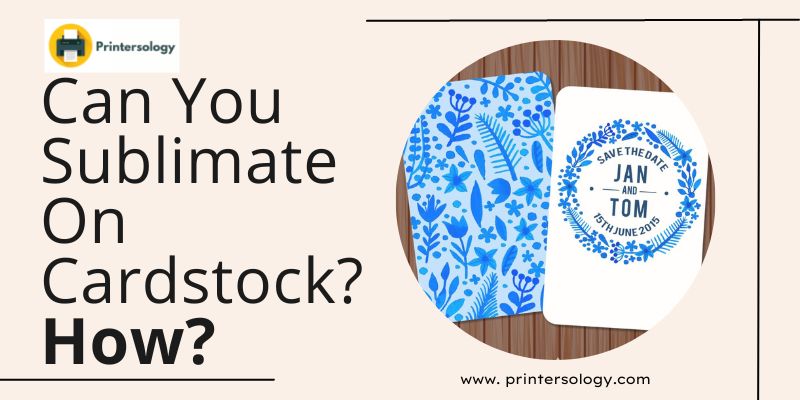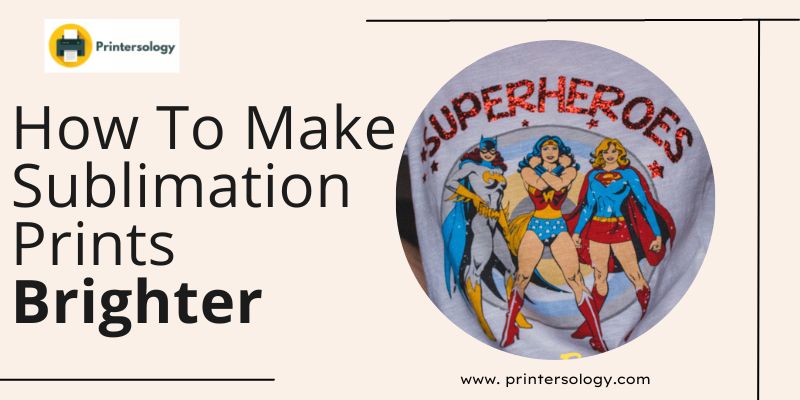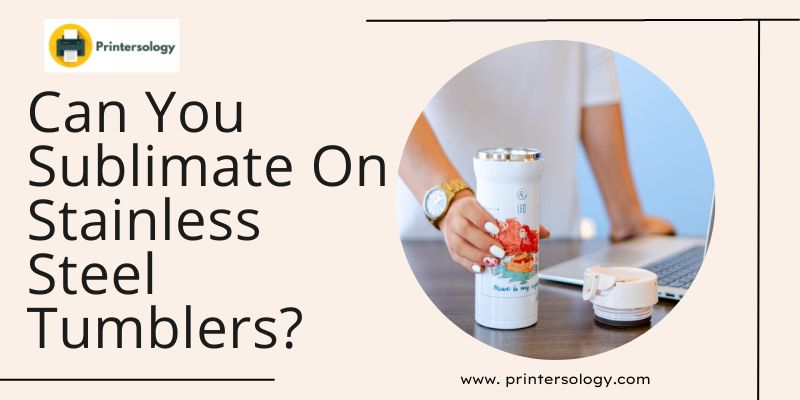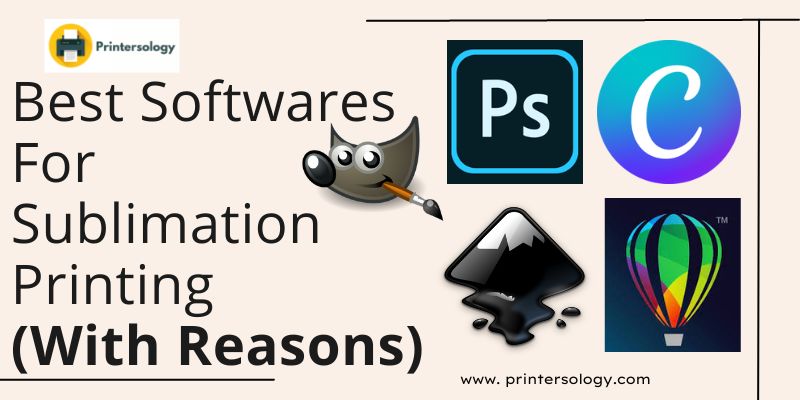Can You Sublimate On Glass? Step By Step Guide To Do It
Sublimation is one of the most amazing ways to enhance the beauty of items like mugs, t-shirts, and various other things with prints. But can you also sublimate on glass?
Yes, sublimation printing on glass is possible but you can’t sublimate on it without poly-coating. Either you can do coating yourself or you can buy poly-coated blanks.
In this article, we’ve shared all details to make this difficult process simple for you. So let’s get started. Make sure you have the right substrate before you start the sublimation process.
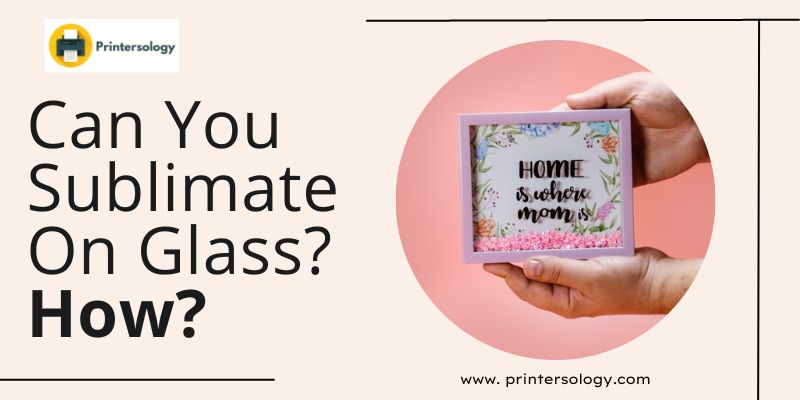
Things You Need
Here are the things you need at the time of sublimating glass material.
- Substrate – Find the right substrate (glass) that’s made for the sublimation. Otherwise, you must purchase sublimation coating sprays(Adhesion Promoter, Subli Glaze Clear, Subli Glaze Translucent).
- Sublimation Printer and Paper – To print images or designs.
- Heat Press Machine – If the glass substrate has a flat surface, the best is to use a heat transfer machine. Otherwise, a mug press is better for glass jars, cups, etc.
- Heat-Resistant Tape and Gloves – To set the image with the glass substrate and protect hands from heat.
- Protective Paper – We’ll add these papers to the bottom and top of the substrate in the heat press.
Step By Step Guide
If you’re using a normal glass substrate, then ensure to read step one very carefully. Otherwise, if you have purchased the poly-coated blanks, you can skip this step.
Step One – Prepare Glass For Coating
Things You Need:
Adhesion Promoter.
Subli Glaze Clear.
Subli Glaze Translucent.
Step By Step Guide to Apply Coating On Glass:
Before I go further and share the steps, you should know about the right side to apply the coating.
The glass substrate has two sides; choose the main (front) side from where you want to see the image; this isn’t the right side to apply the coating. The right side is the second (back side), where we’ll apply the coating or sublimate the image. So let’s start the process.
1. Use an adhesion promoter and paper towel to clean the glass substrate with it. Afterward, wait for around five minutes until the substrate dries.
2. Once the substrate dries, use subli-glaze clear, shake the bottle, and spray it on the back side of the glass substrate. Then put the glass at 340 °F for about 15 minutes in the oven.
3. Wait until the glass substrate cools down. Place the substrate on a flat surface and apply the subli glaze translucent spray to give your substrate a white coating. After applying the coating thoroughly, place the glass substrate again in the oven at 320 °F for 15 minutes. And your glass is ready for the sublimation process.
Step Two – Clean The Glass
Once you’ve poly-coated glass, you must clean your substrate’s glass surface. The side that has a white coating is the one you need to clean. No need to use any special type of chemical for it; normal soap is enough.
Note: You can also use alcohol to clean the glass surface; it’s the best alternative to normal soap. Afterward, clean the glass with a paper towel. Also, make sure to dry the glass before moving to the next step.
Step Three – Print Image
Your glass is clean; now it’s time to print the design or image on the sublimation paper. Remember that your image or design should be large or at least the same size as the glass substrate. If you use small sublimation paper, the corners of the substrate will remain blank, and the image will be sublimated only in the center part.
Note: Don’t use mirror settings while printing images for a glass substrate, even if the image has text.
Step Four – Attach The Image With Glass
Step four is to attach the image to the glass surface. Bear in mind that you have to attach the image on the side of the glass that has a white coating on it, not on the other side. So, place the image on the right side and use heat-resistant tape to stick it properly with the glass substrate.
Step Five – Use Heat Press
Here comes the most crucial step, setting the temperature in the heat press on which the success of sublimation prints depends.
We set the temperature at 365 °F for 360 seconds. You can go with a different setting; it’s up to you but make sure to do some experiments by sublimating on some extra glasses so you’ll know the right temperature.
After setting the temperature, place the glass substrate upside down in the heat press machine (the white coated side that’s attached to the sublimation paper should touch the heat press bottom).
Note: Before placing the glass in the heat press, put one sheet of protective paper beneath the substrate and one on the top.
Step Six – Remove The Substrate
Once the sublimation process is complete, remove the substrate from the heat press machine.
Remember to use heat-resistant gloves because the substrate will be super hot. That’s why it’s better to wait for a few minutes and then remove the sublimation paper from the glass. Congratulations, your glass substrate is ready.
Key Takeaways
- Check whether the glass surface has fingerprints or dirt. If yes, then clean it well. Then start the sublimation process.
- Never sublimate the glass when it’s wet.
- At the time of applying the coating, wait until the spray on the substrate is dry, then put it in the oven or heat press.
- Always use heat-resistant gloves to remove the substrate from the oven or heat press.
Frequently Asked Questions
1. Is sublimation on glass cups possible?
Yes, you can do sublimation on glass cups, but the cups must be made for sublimation purposes and have a poly coating on them. You can’t do it on any glass cup.
2. How to sublimate on glass cups?
To sublimate glass cups, first, clean the coated (white) side with alcohol or normal soap. Wait until it dries, then set the image with heat-resistant tape on the white side. Then use a mug press, you can set the temperature as per your requirement, and that’s it. It’s the same as we do on any glass material as explained in this article above.
Final Words
It’s not a difficult task; just make sure you select the right substrate and understand the temperature settings. For which you have to do the practice. I suggest you sublimate some designs on an extra glass substrate. It’s best as you’ll be able to know the right temperature settings for your substrate.

